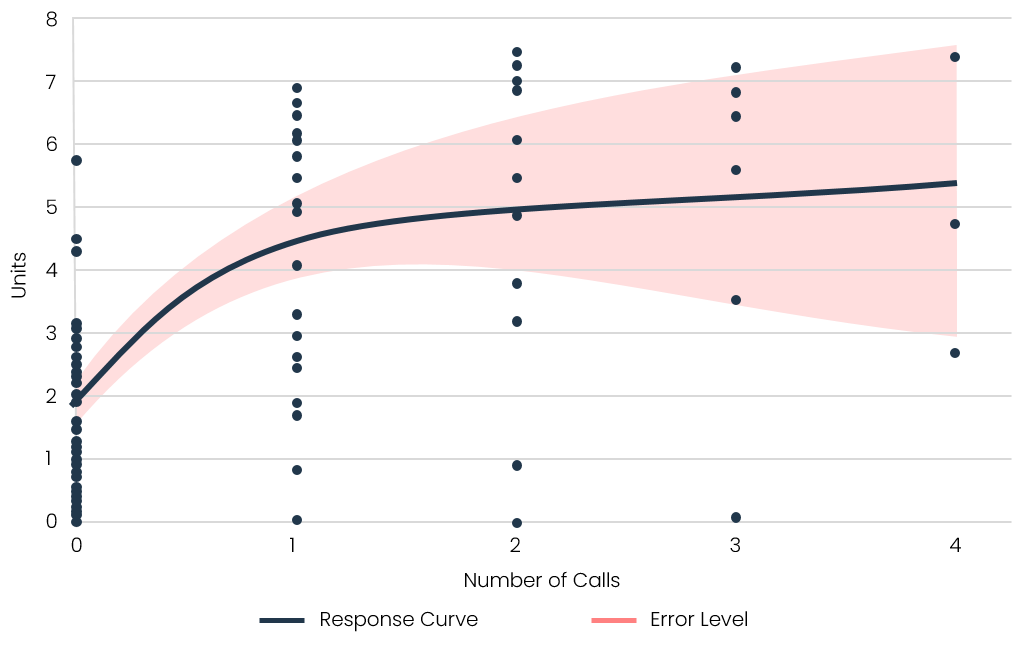Why You Shouldn’t Rely on Response Curves to Set Call Plans on HCP Targets
A critical component of optimizing the sales force’s productivity and efficiency is ensuring HCP and/or account targets are being called on at the proper frequency. The right sales force calling on the right targets at the wrong frequency hinders the sales force’s selling efforts and ultimately leaves sales on the table. Despite the importance of HCP call planning, one of the most common methodologies utilized in life sciences to assign call plans—determining the point of diminishing returns using response curves—has significant limitations that make it inadequate in the ever-changing life sciences landscape. This blog post will explore why you shouldn’t rely on response curves to set pharma targets and call plans.
Setting Call Plans Using Response Curves
One of the most common methodologies pharma, biotech and medical device companies utilize to assign call plans to HCP targets is to statistically estimate the point of diminishing returns on a response curve, i.e., the point at which increased call activity does not yield increased sales. The number of sales generated per number times an HCP was called on is graphed, and a line is drawn that follows the average sales generated per number of calls (refer to figure below).
However, response curves have high amounts of statistical error because the error term expands as the number of data points decreases, meaning that the highest error is at higher call levels since the fewest calls are made at the higher call levels. Thus, the area that is most important for determining diminishing returns—and thus most important for assigning call frequency—has the highest error.
Since there are fewer HCPs called on at high call levels, the error associated at high call levels is very large
Only because of the law of large numbers does this methodology work: it is right more than it is wrong. Nevertheless, this level of accuracy unfortunately is not enough for the competitive, ever-changing life sciences industry, which requires greater precision in call planning.
If response curves aren’t enough, then how can life sciences companies achieve this greater precision in call planning?
Then How Should Call Plans be Set?
Since the statistical limitations of response curves make them insufficient in setting call plans as effectively as possible, life sciences companies must adopt an alternative methodology that can achieve greater precision and accuracy in setting call plans.
The Marketing Advantage has developed a physician call planning and targeting methodology that analyzes an HCP’s product volume and potential in order to ensure the HCP is called on in a manner consistent with their levels of these variables. In this way, a maintenance target is not overcalled just because he/she has high product volume, thereby optimizing sales force efficiency, and calls that might have inaccurately been allocated to a maintenance target are instead allocated to growth targets or to prospecting new HCPs, thereby driving overall company growth. Contact us today to learn more about this call planning methodology and all it can do for you.
Conclusion
The statistical limitations of response curves ultimately make them inadequate in setting accurate call plans for pharmaceutical and biotech sales forces. Rather than setting call plans based on response curves, companies should instead utilize more precise methodologies that will not only drive sales force efficiency and productivity, but overall sales and growth. Increasing the efficiency of sales calls is comparable to increasing the size of the sales force without the cost of expansion, demonstrating how powerful it is to set accurate and effective call plans.







